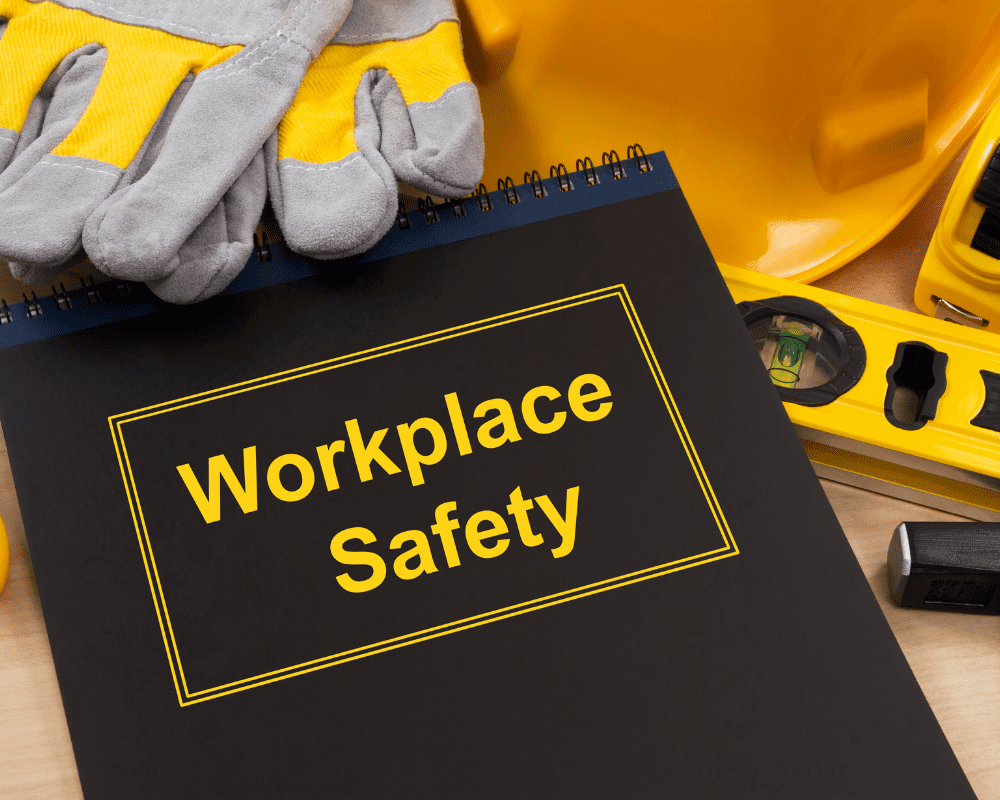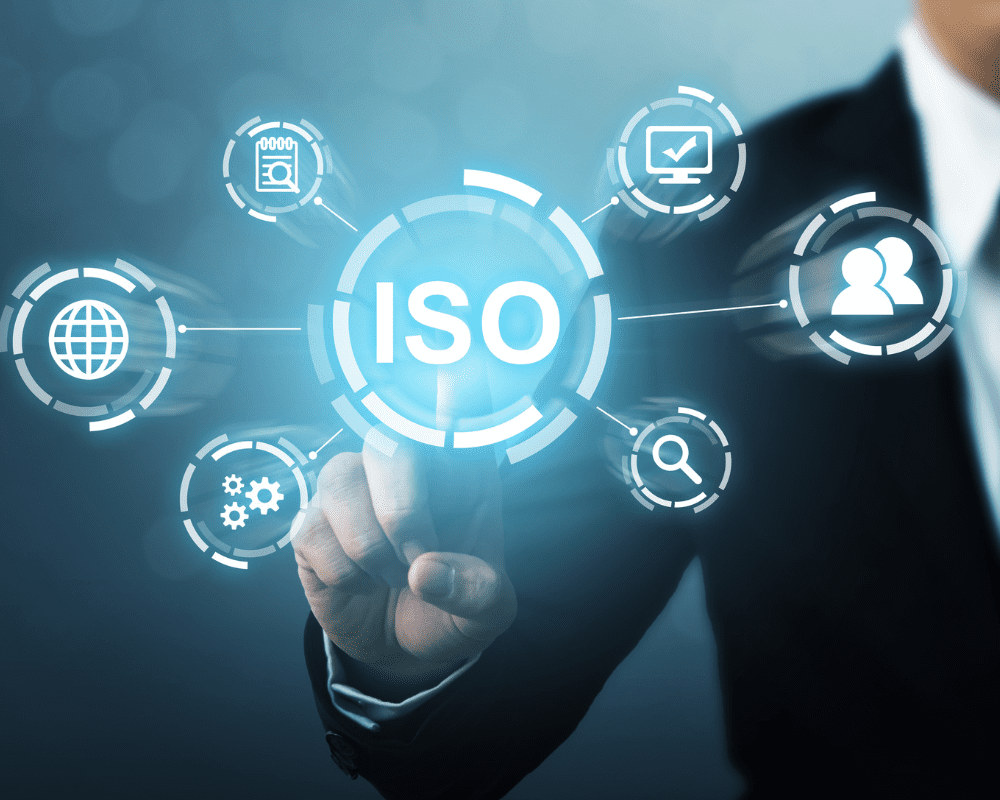Empower Your Workforce with Comprehensive Occupational Health & Safety Management Systems (OHSMS)
A Gateway to a Safer Workplace! – Get ISO Compliance Services
Safety management systems in Australia are critical for the health and safety of both employees and employers. These systems have been designed to ensure that all workplace hazards are identified, assessed, monitored and controlled to reduce or eliminate risks associated with work-related activities.
This article will explore how a safety management system can be implemented efficiently in an Australian setting, providing readers with the necessary information needed to develop a successful strategy.
This paper aims to provide an overview of current safety management systems in Australia and their application within businesses across different industries. It will discuss the best practice principles used by organisations when implementing such strategies, as well as key elements that should be taken into account during implementation.
Additionally, it will consider potential challenges faced during the process, along with recommendations on how these issues may be addressed effectively and safely.
Finally, this article seeks to explain why having an effective safety management system is essential for any business operating in Australia today. By discussing various aspects related to the implementation of such strategies – from identifying key stakeholders to monitoring processes – it is hoped that readers gain insight into what needs to be done in order to create a safe working environment for everyone involved.
Definition Of A Safety Management System
A Safety Management System (SMS) is a framework of procedures and guidelines for organizations to follow in order to ensure the safety and well-being of employees, customers and other stakeholders. SMSs are typically mandated by law in many jurisdictions worldwide, including Australia’s Occupational Health & Safety Management Systems (OHSMS) policy.
The aim of an OHSMS is to make sure that all operations comply with applicable health and safety laws, regulations, standards, codes and policies.
An effective SMS will identify potential hazards within the workplace or environment, determine risk levels associated with each hazard and develop strategies to reduce risks accordingly. It should also include measures to monitor compliance with relevant legislation as well as procedures for responding appropriately when incidents occur.
Additionally, it should provide guidance on incident investigations so that any lessons learned can be applied elsewhere. Through these processes, an organization can continuously improve its safety performance while developing a culture where everyone takes responsibility for their own actions.
The Benefits Of Implementing Such Systems
Safety management systems are an invaluable tool for organisations operating within Australia, allowing them to effectively manage the health and safety of their employees. Not only do they ensure compliance with relevant legislation, they also assist in reducing workplace risks and hazards that can lead to costly incidents and injuries.
The benefits of implementing a safety management system include the following:
- Improved OH&S Performance: A well-implemented OHS management system helps reduce workplace accidents and injuries by providing clear guidelines on how to safely perform duties, as well as educating staff about potential hazards.
- Streamlined Documentation: With a HSEQ Management System in place, all documentation is managed electronically which makes it easier for businesses to keep track of records such as accident reports or risk assessments. It also means that documents can be updated quickly when changes occur.
- Cost Savings: By having a Safety Management System Software installed, companies have access to tools that help automate processes such as incident reporting or EHS audits, resulting in lower costs over time.
- Quality System Documentation WHS: Having a quality system document dedicated to health and safety provides a baseline reference point that employees can use when performing tasks. This helps ensure everyone is following the same procedures and best practices at all times.
Overall, implementing a safety management system offers numerous advantages for organisations operating in Australia – from improved employee performance to cost savings through automation – making it essential for any business looking to protect its workers’ well-being while staying compliant with regulations.
What Is Required For Compliance?
When implementing a safety management system in Australia, it is important to understand the necessary compliance requirements. This will ensure that the system meets legal obligations and minimises health and safety risks. To ensure regulatory compliance, organisations must adhere to Occupational Health and Safety (OHS) legislation as well as other relevant laws.
| Requirements | Description | Implications |
|---|---|---|
| OHS System | A documented set of policies, procedures and processes for managing workplace health and safety hazards. | Ensures all staff have access to detailed information about how to identify potential risks and take appropriate action. |
| Risk Assessment | Assessing the likelihood of an adverse event occurring related to OH&S activities. | Allows employers to identify any areas of risk before they can lead to accidents or injuries at work. Helps employers comply with OSH regulations by taking proactive steps towards preventing incidents from happening in the first place. |
| Safety Legislation | The law governing occupational health and safety practices in Australia includes the Workplace Health & Safety Act 2011 (Cth). | Employers must be aware of their obligations under these laws and make sure they are adhering to them when setting up their safety management systems. Non-compliance may result in penalties or fines being imposed on businesses that fail to meet legal standards. |
Regulatory Requirements In Australia
ISO Certification and Safety Management Systems For Workplaces In Australia
Safety legislation in Australia is complex and comprehensive, with a range of regulatory requirements that must be followed to ensure compliance. The safety standards set out by the Australian government are often incorporated into ISO compliance standards for Australia, as well as WHS (Workplace Health and Safety) Legislation. Compliance with these regulations is essential to provide a safe workplace environment.
Organisations must adhere to safety regulations or face significant penalties, including fines, civil litigation and criminal prosecution. Regular audits should be conducted to assess compliance with relevant legislation, ensuring all employees are aware of their obligations under the law. Companies should also review policies on a regular basis to ensure they remain compliant with current legislative requirements and industry standards. This can help minimise the risk associated with non-compliance and improve workplace safety overall.
Understanding Risk Assessments And Hazard Identification
Risk management and hazard identification are fundamental to the development of a safety management system in Australia. They provide a framework for assessing workplace risks , identifying potential hazards, and developing control measures to reduce or eliminate them. The aim is to ensure that all safety obligations are met and that workers can operate safely within their environment.
To effectively manage risk , an organisation must understand the different types of risks associated with its operations. These include physical hazards such as unsafe equipment or processes; chemical or biological risks from hazardous materials; ergonomic hazards related to body movements; psychological stressors created by tight deadlines; and environmental factors like extreme temperatures. By understanding these various types of risks, organisations can develop effective strategies for managing them.

In addition to risk assessment, hazard identification is also essential for maintaining a safe work environment. Hazard identification involves identifying potential sources of danger so they can be avoided or mitigated before any harm occurs. It should involve both employees and supervisors working together to identify likely problems through observation, research, accident records, interviews, surveys, and other forms of data gathering.
This process should be followed up with incident reporting procedures which allow employers to track unsafe behaviour in the workplace over time and take action when necessary.
Establishing Protocols To Deal With Hazards
Once hazards have been identified and risk assessed, the next step is to establish protocols to deal with them. This involves using HSE systems such as OHS management software or safety management system aviation platforms to create meaningful changes in workplace processes. The aim should be to prevent further harm by mitigating risks and reducing exposures through the implementation of practical control measures.
Safety committees can also help ensure that all stakeholders are involved in assessing the effectiveness of these new protocols and contribute ideas for improvement if needed. It is important that everyone involved understands their role in implementing the protocol and how it will affect their day-to-day operations.
For example, workers may need additional training on safe working practices while managers must understand the importance of enforcing policies relating to health and safety. Regular reviews should take place to assess whether any improvements have been made since introducing a work health and safety management system into the workplace.
How To Design An Effective Sms Framework
Designing an effective Safety Management System (SMS) framework is essential for organisations to meet their obligations in providing a safe and healthy workplace. To ensure compliance with the relevant Occupational Health and Safety (OHS) legislation, employers need to implement measures that effectively identify hazards and risks, evaluate them, and put into place suitable control strategies.
An SMS should be tailored to each organisation’s unique requirements and includes policies, procedures, protocols, systems of work, hazard registers and safety plans.
The OHSMS can be easily implemented using various software solutions such as WHS management system software, EHS system or health & safety management software. This type of solution simplifies the process of creating the necessary documents needed to establish an effective SMS framework by providing templates that are pre-populated with content specific to Australian OHS regulations.
Additionally, it automates many of the processes related to risk assessments, inspections and audits, allowing organisations to efficiently manage all aspects of their Safe Work Management System from one central location. Furthermore, these systems have reporting capabilities that allow data analysis so that improvements can be made over time in order to optimise the performance of the SMS framework.
An organisation’s commitment to safety must not only come from within but also involve everyone who interacts with its operations; contractors, suppliers and subcontractors alike should understand what is expected of them when operating onsite or managing any activities associated with the organisation’s business operations.
It is therefore important that clear communication channels are established between employees/contractors/subcontractors etc., ensuring they are provided with up-to-date information regarding changes in policy or procedure if required.
The effectiveness of an SMS relies heavily upon whether those involved understand how it functions, complies with its rules and follow best practice guidelines at all times – this requires comprehensive training programmes being designed specifically for those roles where there may be personnel exposure to potential hazards or risks created by certain tasks.
The Role Of Training In Sms Development
The role of training in developing a safe and efficient Safety Management System (SMS) is fundamental. It helps ensure that personnel are better equipped to understand the processes and procedures required to maintain safety standards, as well as encourages them to recognize potential hazards and risks.
Training can be delivered through various methods, such as online learning, classroom instruction, or virtual simulation exercises. Such programs may include OH&S-specific topics like emergency preparedness, incident investigation techniques, hazard identification, risk management strategies, workplace inspection protocols and more.
In addition to training on SMS-related topics, employees must also learn how to use OHSMSs (Occupational Health & Safety Management Systems), EHS management software solutions, WHS management systems (Work Health Safety Management Systems), HSEQ system tools (Health, Safety, Environment Quality System Tools) and other related technologies available within their organization.
These applications enable personnel to access safety data quickly while providing an effective way for managers to track employee performance with regard to safety compliance. Moreover, these systems provide detailed analytics which allows organizations to identify areas where improvement is necessary so that corrective actions can be taken accordingly.
Ultimately this type of training will help improve overall safety performance in any organization by ensuring that all staff are aware of the correct procedures for maintaining appropriate levels of health and safety at work.
Keeping Records To Monitor Performance
The monitoring of performance through the keeping of records is an important aspect of a safety management system in Australia. Records are used to provide evidence that safety and health standards are being met and that workers remain safe on the job site.
To ensure workplace safety, records should be kept for:
- OHS audits
- WHS Management Plan Reviews
- OH&S Legislation Compliance Checks
- Set Of Policies & Procedures Documentation
- Safety Plans Implementation Checks
- Workplace Inspections Findings
- Occupational Health And Safety Training Records
- Incident Investigations Reports Summary
- Regular Risk Assessments Results Analysis.
These records can help identify any areas where further improvement is needed or if additional training needs to be provided to workers. Maintaining these records, allows organisations to stay up-to-date with their occupational health and safety requirements while also ensuring they have taken all necessary steps to protect workers from harm. It also provides an audit trail that can prove compliance with legal obligations should any issues arise down the track.
Creating A Culture Of Safety Awareness
The success of a safety management system (SMS) in Australia is dependent on the ability to create and maintain a culture of safety awareness. To achieve this, it is important for an organization to have well-defined policies and procedures that are tailored to their specific needs and environment.
Additionally, effective communication about these policies and procedures must be maintained with all stakeholders, including staff and other personnel who may be affected by any organisational changes or initiatives.
| Step | What Needs to Be Done? |
|---|---|
| Establish Clear Policies & Procedures | Develop appropriate work health and safety management systems that meet legal requirements. |
| Communication | Educate staff on how to operate safely within the workplace through regular meetings and training sessions. |
| Foster Positive Behaviors | Promote positive behaviours such as reporting unsafe conditions, following proper protocols, etc. |
It is also essential to ensure that those responsible for implementing safety measures are adequately trained in order to maximize compliance with existing regulations. Through continual evaluation and improvement of processes, organizations can optimize the effectiveness of their SMS while ensuring a safe working environment for everyone involved.
By taking proactive steps towards creating a culture of safety awareness throughout an organization, employers can protect themselves from potential liabilities associated with occupational injuries or illnesses caused by negligence or inadequate risk assessment.
Strategies For Continuous Improvement
Strategies for Continuous Improvement are essential components of a successful safety management system in Australia. Developing and implementing effective strategies can help organizations achieve their goals related to occupational health and safety, as well as construction safety management systems. Here are some key points to consider when developing these strategies:
- Utilizing an ISO Safety Management System (ISO 45001) as a basis for the safety management system is one-way organizations can ensure compliance with all relevant regulations and standards. This provides a systematic approach to identifying potential risks, assessing those risks, and implementing suitable controls that will reduce or eliminate them.
- Regular review of existing processes is also important; it allows organizations to identify areas where improvement could be made by either introducing new measures or updating existing ones. A structured process involving stakeholders should be used to analyze current performance levels and identify opportunities for further improvement.
- Finally, training programs need to be developed that cover topics such as understanding risk assessment techniques, using personal protective equipment correctly, and complying with applicable laws and regulations. These programs should also include refresher sessions on a regular basis, so that staff remains up-to-date on any changes in industry practices.

Organizations must take steps towards continual improvement if they want their safety management system to remain compliant with legal requirements, protect workers from harm, and ultimately create an environment that promotes safe working conditions for everyone involved.
Auditing And Reporting On The System’s Effectiveness
In order to ensure the safety management system is effective, audits and reports need to be conducted regularly. Auditing involves examining records of activities such as incident investigations, risk assessments and safety inspections in order to identify any non-compliance with safety policies.
Reports should then be prepared highlighting areas for improvement that could reduce the risk of injury or other workplace accidents. Senior management must take responsibility for implementing corrective actions where necessary.
A systems-based approach will provide insight into how well a company’s safety management system is functioning by looking at its design elements, implementation strategies, monitoring standards and evaluation efforts. It can also help determine whether the system has been adequately implemented across all departments within an organisation. This information can then be used to make improvements and adjustments where needed in order to guarantee that employees are provided with safe working conditions.
Audits and reporting on the effectiveness of a safety management system are key in ensuring compliance with regulations while safeguarding employee health and wellbeing. Regular reviews are essential so that businesses can measure their progress towards achieving zero-harm targets over time.
Challenges Faced During Implementation And Operation
The challenge of implementing and operating a safety management system (SMS) in Australia can be daunting. From the establishment of journey management systems to the implementation of an online SMS and HSE management system, there are many hurdles that must be cleared before an organisation is able to achieve compliance with applicable regulations. In this section, we will explore some of these challenges faced by organisations during implementation and operation.
One key issue for many organisations is understanding the complexities involved in establishing suitable processes for auditing their current operations against the required SMS standard. This includes ensuring that policies and procedures are comprehensive enough to cover all relevant activities and areas of risk assessment.
A further challenge is having sufficient resources available to implement the changes necessary to ensure compliance with regulatory requirements such as those set out by Civil Aviation Safety Authority (CASA). Additionally, it may be challenging for some businesses to adequately train staff on how best to use new or existing safety management systems, as well as provide ongoing support once they have been implemented.
Organisations also need to consider how best to incorporate operational risks into their overall SMS framework while still allowing them flexibility when it comes to business decisions related to safety regulation compliance.
Furthermore, monitoring performance metrics within different departments across multiple sites requires additional planning and coordination between teams working together towards achieving higher levels of safety standards. Finally, budget constraints may limit an organisation’s ability to invest sufficiently in developing a robust SMS program over time; however, with proper planning, even limited budgets can help create successful outcomes.
Technology Solutions For Safety Management Systems
Technology solutions are essential for successful safety management systems (SMS) in Australia. Detailed Occupational Health and Safety Management Systems (DET OHSMS) empower organizations to ensure compliance with applicable laws, regulations, and standards that support a safe workplace environment.
These technology solutions provide the necessary tools needed to proactively identify risks associated with work-related activities and develop the appropriate procedures to mitigate these potential hazards.
A comprehensive DET OHSMS can assist organizations in meeting their obligations relating to occupational health and safety by providing an integrated approach for emergency management planning, incident reporting, risk assessment, safety control measures implementation, as well as continual improvement processes.
Moreover, it provides employees access to an abundance of pertinent operational information about hazardous materials or equipment used on site, enabling them to continuously be informed about relevant safety regulation updates.
Organizations must remain proactive regarding employee protection from any hazardous conditions related to their job function. Technology solutions make this possible through automated processes such as tailored safe work procedures that put responsibility into the hands of workers while ensuring they have all the resources required for continuous operations. This allows companies to maintain efficient operations safely without compromising productivity or quality of output.
ISO Compliance In Australia
In Australia, ISO (International Organization for Standardization) compliance is a voluntary process that organizations can undertake to demonstrate their commitment to internationally recognized standards and best practices. These standards cover a wide range of industries and aspects of business operations, such as quality management, environmental management, occupational health and safety, and information security.
Some of the most commonly adopted ISO standards in Australia include:
- ISO 9001: This is the international standard for quality management systems (QMS). It provides a framework for organizations to consistently meet customer requirements, improve overall performance, and achieve customer satisfaction.
- ISO 14001: This standard outlines the requirements for an environmental management system (EMS). It helps organizations manage their environmental responsibilities and achieve sustainable growth while minimizing their impact on the environment.
- ISO 45001: This is the international standard for occupational health and safety management systems (OHSMS). It aims to help organizations reduce workplace risks and create a safe and healthy working environment for employees and stakeholders.
- ISO 27001: This standard focuses on information security management systems (ISMS) and helps organizations safeguard sensitive information, maintain data privacy, and comply with legal and regulatory requirements.
While ISO compliance is voluntary, many Australian organizations choose to become certified to improve their processes, demonstrate their commitment to industry best practices, and gain a competitive edge in the market. Certification is typically achieved through a third-party audit conducted by an accredited certification body. Once certified, organizations must undergo regular audits to maintain their certification and ensure ongoing compliance with the relevant ISO standard.
Get Your ISO Certification Today With Spire Safety Australia
Getting ISO certification is an important step for organizations to ensure that their safety management system meets the relevant safety standards. Australia’s workplace laws require organisations to take steps to protect workers from harm, and having a formalised Safety Management System (SMS) in place ensures compliance with those regulations.
The SMS should include all aspects of health and safety, including policies, procedures, risk assessments and training. By obtaining an ISO certificate, companies can guarantee their systems are up-to-date and meet international standards.
Having an accredited SMS not only helps organisations comply with legal requirements but also shows commitment to effective safety management. Employees feel more secure when they know top management has taken the necessary measures to keep them safe.
Furthermore, it minimises financial risks as hefty fines may be imposed on companies that fail to abide by the legislation or do not have sufficient control mechanisms in place. It also sends a positive message outward about how seriously the company takes employee well-being and customer satisfaction.
Organisations must appoint a designated safety representative who will oversee all activities related to health and safety within the organisation while setting clear objectives and monitoring progress towards those goals. This could involve assessing current performance against set targets or benchmarking against other businesses in similar industries.
Additionally, regular reviews are essential, so any changes or updates required can be implemented quickly and accurately; this includes reviewing processes such as incident reporting, hazard identification and investigation techniques which form part of robust workplace operations.
Frequently Asked Questions
How Much Does It Cost To Implement A Safety Management System?
The cost of implementing a safety management system can vary significantly based on the size and complexity of the organization in question. It is important to consider all factors when determining how much it will cost, including the number of employees, types of work activities, necessary software and hardware requirements, and any required training or educational materials. Furthermore, additional costs for legal advice or consultation services may need to be considered.
For organizations in Australia looking to implement such a system, it is recommended they seek out specialized consultants who are familiar with local laws and regulations regarding safety management systems. These professionals typically offer packages tailored specifically to the needs of each organization; this includes an assessment phase where they identify areas needing improvement before offering advice on ways to address those issues within budget constraints.
Additionally, they often provide ongoing support and guidance throughout the implementation process so that businesses can rest assured their new system is compliant with relevant legislation.
How Long Does It Take To Get Iso Certification?
Obtaining this certification is an important step in the process of implementing a successful safety management system. The time required can vary depending on several factors, including:
- The size and complexity of the organisation;
- How ready they are for accreditation; and
- Their chosen certification body.
In Australia, most organisations embarking on ISO certification need to allocate around 12 months for the entire process, from initial planning through to certification and ongoing maintenance. This duration may be extended or reduced based on how well-prepared the organisation is and its ability to meet all criteria quickly and efficiently.
As part of this timeline, four basic stages must be undertaken: preparation, documentation, implementation and inspection/certification. These activities should include developing policies and procedures, decision-making processes and training protocols, amongst other requirements set by the International Organisation for Standardisation (ISO).
Safety management analysts advise that a thorough understanding of these standards should be obtained prior to commencing any project, as non-compliance could lead to delays in achieving certification or even failure of assessment altogether. An experienced consultant with knowledge specific to your industry sector can provide invaluable assistance during each stage of the process, ensuring maximum efficiency when obtaining ISO 9001 Certification in Australia.
What Are The Potential Legal Implications Of Not Complying With Safety Management Systems?
Safety management systems (SMS) are a framework of policies and procedures designed to minimize the risks associated with operational activities. Not complying with SMS regulations, whether intentional or not, can have serious legal implications for organizations. It is essential that companies take proactive steps to comply with safety management system requirements in order to mitigate potential liabilities.
The most basic form of legal repercussion resulting from non-compliance with SMS involves fines imposed by regulatory bodies such as Worksafe Australia. Depending on the severity of the violation, these penalties may be substantial enough to cause significant financial losses for an organization. In addition, there is also the risk of civil litigation if accidents occur due to inadequate safety measures.
Companies may face compensation claims from third parties affected by their negligence, potentially putting them at risk for bankruptcy or other economic damages.
SMS compliance has become increasingly important in recent years as more legislation and regulation surrounding occupational health and safety has been introduced. Organizations must remain updated on current standards and ensure all personnel are properly trained in order to avoid costly violations and legal repercussions. With proper adherence to SMS protocols, businesses can protect themselves against potential liability while safeguarding workers’ well-being.
Are There Online Resources Available To Help With Understanding And Implementing Safety Management Systems?
The implementation of safety management systems is a critical part of any organization’s risk mitigation. Understanding and implementing these measures can be challenging, so it is helpful to have access to resources that provide guidance and support. This article will explore the availability of online resources for understanding and implementing safety management systems in Australia.

Safety management systems are designed to protect personnel and property from risks associated with workplace activities by setting out plans, policies, procedures, practices, processes and controls. They help ensure compliance with health and safety regulations while also promoting a safe working environment. To achieve this, organizations must understand how to design, implement and maintain effective safety management systems.
There are various online resources available to assist those looking to improve their knowledge of safety management system principles:
- Safe Work Australia – Provides information about legislation requirements for businesses operating in Australia and guides on setting up a safe work environment.
By having access to relevant information sources like these, employers can gain essential insights into what constitutes good practice when designing or maintaining their own bespoke safety management system solutions. It is also important for employees involved with the system’s implementation to receive adequate training in order to ensure they comply fully with its standards and expectations.
How Can Safety Management Systems Be Adapted To Different Types Of Businesses Or Industries?
Safety management systems are essential in maintaining a safe working environment and protecting workers. However, these systems can vary depending on the types of businesses or industries they are applied to. Understanding how such systems can be adapted is, therefore vital for managing safety effectively.
When it comes to adapting safety management systems, there are several factors that need to be considered. For example, the scope of operations within an industry may mean different procedures have to be implemented; likewise, the size and nature of a business will impact the level of detail required when it comes to implementing a system.
Additionally, cultural differences between countries might require extra attention when designing a system suitable for use across multiple locations. All these elements must be taken into account if a successful adaptation is desired.
To ensure the effective implementation of adapted safety management systems, robust risk assessment processes should always form part of the design process. This includes analyzing potential hazards as well as identifying reasonable control measures which could prevent incidents from occurring.
Furthermore, communication strategies need to be developed so employees can easily understand their roles and responsibilities and voice any questions and concerns about particular aspects of the system itself. By taking these steps during development, organizations can create tailored solutions that meet their specific needs while still allowing them to comply with applicable regulations and standards in place at both local and international levels.
Conclusion
The implementation of safety management systems is a necessary part of running any business in Australia. It not only helps to ensure the well-being of employees but also contributes to compliance with applicable laws and regulations. The cost and time associated with setting up these systems can vary based on the complexity of the system required for each particular situation. Additionally, there are potential legal consequences for businesses that do not comply adequately with safety management standards.
Fortunately, there are many online resources available that provide useful guidance when it comes to an understanding and implementing safety management systems within organisations.
Many of these materials offer practical advice as well as templates that could be used by businesses to help them meet their obligations under relevant legislation or industry standards. Furthermore, existing systems may need to be adapted depending on the specific needs of different types of businesses or industries.
Overall, it is important that all organisations operating in Australia understand their responsibility towards ensuring workplace health and safety through effective implementation and maintenance of a suitable safety management system. With access to the right information and support services, this process should become increasingly straightforward and beneficial for both employers and employees alike.
What Is as4801 In Australia?
AS4801, or Australian Standard AS/NZS 4801, is an Occupational Health and Safety Management System (OHSMS) standard in Australia and New Zealand. It provides a framework for organizations to identify, control, and minimize risks associated with health and safety in the workplace.
This standard assists organizations in managing their legal obligations, reducing workplace incidents, and promoting a safe working environment for employees, contractors, and other stakeholders.
What Is ISO 45001:2018 In Australia?
AS4801 is now superseded by the international standard ISO 45001:2018, which was published in March 2018. ISO 45001 is a global standard for occupational health and safety management systems, and it has been adopted by many countries, including Australia and New Zealand. Organizations previously certified to AS4801 are encouraged to transition to ISO 45001 to ensure alignment with the latest best practices in occupational health and safety.







